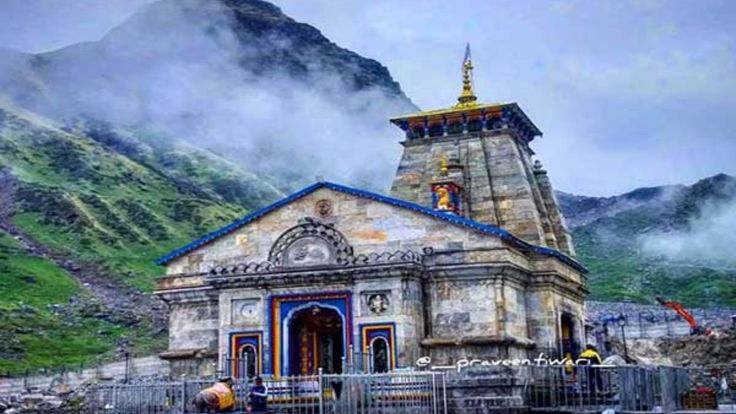The Panch Kedar refers to a group of five revered temples dedicated to Lord Shiva, located in the breathtaking Garhwal region of Uttarakhand, India. This pilgrimage circuit is not only significant for its spiritual essence but also for its rich mythology, stunning landscapes, and the deep devotion it inspires among millions of pilgrims and tourists. The five temples—Kedarnath, Madhmaheshwar, Tungnath, Rudranath, and Kalpeshwar—each hold unique significance and are integral to the spiritual journey of devotees seeking blessings from the divine.
Historical and Mythological Background
The origins of the Panch Kedar are deeply rooted in Hindu mythology, particularly in the epic Mahabharata. According to legend, after the devastating Kurukshetra War, the Pandavas sought forgiveness from Lord Shiva for the sins they committed during the battle, including fratricide. To atone for their actions, they embarked on a quest to find Shiva and seek his blessings.However, Lord Shiva was deeply hurt by the bloodshed and chose to evade the Pandavas by transforming himself into a bull. While searching for him in the Garhwal region, Bhima, one of the Pandava brothers, recognized the bull grazing near Guptakashi. In an attempt to capture him, Bhima caught hold of the bull’s tail and hind legs. As he did so, Shiva vanished into the ground but reappeared in five different forms across various locations in the Himalayas.The Pandavas built temples at these five sites to honor Lord Shiva and seek redemption. This act not only symbolized their devotion but also marked the establishment of the Panch Kedar temples as sacred pilgrimage sites.
The Five Temples of Panch Kedar
- Kedarnath
- Location: Kedarnath
- Significance: Kedarnath is perhaps the most famous of the Panch Kedar temples and is situated at an elevation of 3,583 meters (11,755 feet). The temple is dedicated to Lord Shiva in his form as a Jyotirlinga. It is believed that the hump of the bull that Bhima caught is worshipped here. Kedarnath serves as a major pilgrimage site and attracts thousands of devotees each year.
- Madhmaheshwar
- Location: Near Ukhimath
- Significance: Madhmaheshwar is situated at an altitude of 3,289 meters (10,795 feet) and is associated with Lord Shiva’s navel. The temple is surrounded by picturesque meadows and offers breathtaking views of the Himalayan peaks. It is less crowded than Kedarnath but holds immense spiritual significance.
- Tungnath
- Location: Near Chopta
- Significance: Tungnath is known as the highest Shiva temple in the world, standing at an elevation of 3,680 meters (12,073 feet). It is dedicated to Lord Shiva’s arms and is a popular trekking destination. The trek to Tungnath offers stunning views of snow-capped mountains and lush green valleys.
- Rudranath
- Location: Near Gopeshwar
- Significance: Rudranath is situated at an altitude of 2,286 meters (7,471 feet) and represents Lord Shiva’s face. The temple is surrounded by pristine nature and offers a peaceful atmosphere for meditation and reflection. Pilgrims often visit Rudranath after completing their journey to Kedarnath.
- Kalpeshwar
- Location: Near Helang
- Significance: Kalpeshwar is located at an elevation of 2,134 meters (7,004 feet) and symbolizes Lord Shiva’s hair. This temple is unique as it remains open throughout the year and is accessible even during winter months when other temples are closed due to heavy snowfall.
The Pilgrimage Experience
Embarking on a pilgrimage to Panch Kedar is not just a physical journey; it is a spiritual quest that connects devotees with their faith and nature. The circuit typically begins at Kedarnath and proceeds through Madhmaheshwar, Tungnath, Rudranath, and finally Kalpeshwar.The trek between these temples varies in difficulty and offers pilgrims a chance to immerse themselves in the breathtaking beauty of the Himalayas. Each temple visit provides an opportunity for prayer, reflection, and connection with Lord Shiva.
Best Time to Visit
The ideal time to undertake the Panch Kedar Yatra is between May and November when weather conditions are favorable for trekking and travel. During this period, pilgrims can experience pleasant temperatures and clear skies while enjoying stunning views of the surrounding mountains.
Cultural Significance
The Panch Kedar temples are not just places of worship; they are also cultural hubs that showcase local traditions and customs. Festivals such as Maha Shivaratri see large gatherings at these temples where devotees participate in rituals, prayers, and celebrations honoring Lord Shiva.The local communities around these temples play a crucial role in preserving their cultural heritage while providing hospitality to pilgrims. Visitors can experience authentic Garhwali cuisine at local eateries that offer traditional dishes made from locally sourced ingredients.
Environmental Challenges
With increasing footfall due to tourism and pilgrimages, there are growing concerns about environmental sustainability around these sacred sites. Local authorities have initiated various measures aimed at preserving natural resources while ensuring that pilgrims can enjoy their spiritual journeys without harming the environment.
Conclusion
The Panch Kedar circuit stands as a testament to India’s rich spiritual heritage and natural beauty. Each temple embodies unique aspects of Lord Shiva while offering pilgrims opportunities for reflection and connection with their faith.As you embark on your journey through this sacred circuit nestled in the Himalayas, you will not only witness architectural grandeur but also experience profound moments that resonate deeply within your spirit—a reminder of devotion’s enduring power amid nature’s splendor.Whether you seek redemption like the Pandavas or simply wish to explore one of India’s most revered spiritual destinations, Panch Kedar promises an enriching experience that lingers long after your visit.
FAQs About Panch Kedar
What are Panch Kedar?
Panch Kedar refers to a group of five sacred temples dedicated to Lord Shiva located in Uttarakhand: Kedarnath, Madhmaheshwar, Tungnath, Rudranath, and Kalpeshwar.
How do I reach Panch Kedar?
The temples can be reached via trekking routes from nearby towns like Gaurikund (for Kedarnath) or Chopta (for Tungnath). Helicopter services are also available for Kedarnath during peak seasons.
When is the best time to visit?
The best time to visit Panch Kedar is between May and November when weather conditions are favorable for trekking.
What should I pack for my pilgrimage?
It’s advisable to pack warm clothing (especially if visiting during cooler months), sturdy trekking shoes, water bottles, snacks, a first-aid kit, and personal items needed for prayer or rituals.
Are there accommodations available near these temples?
Yes! There are guesthouses and lodges available near each temple catering to pilgrims seeking accommodation during their visit.
What cultural experiences can I expect?
Visitors can engage with local customs through interactions with residents, enjoy traditional Garhwali cuisine at local eateries, and participate in temple rituals during their visit.
Is there an entry fee for visiting these temples?
No entry fee is charged for visiting most temples; however, donations for temple maintenance are appreciated.




